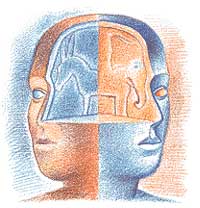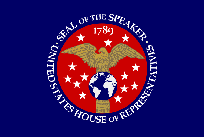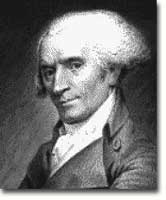The Most Powerful Position in the House of Representatives Is

6b. Leadership in Congress: Information technology's a Party Matter

Republicans and Democrats in Congress continually battle each other on political party lines, fifty-fifty though many claim that the parties are essentially the same.
Is walking the plank dangerous? Certainly, for a pirate. Just for a politician, it may be prudent.
Partisanship — or tearing loyalty to one's political party — more often than not is not admired in the United States today. Many people today phone call themselves independent voters, and grouse betwixt the parties in Congress is often condemned. But parties are very important in both the Business firm of Representatives and the Senate today. Fifty-fifty though political parties practice not play as big a role in elections as they once did, they still provide the basic organization of leadership in Congress.
After each legislative election the political party that wins the near representatives is designated the "majority" in each house, and the other political party is chosen the "minority." These designations are significant considering the bulk party holds the most significant leadership positions, such as Speaker of the House. Ordinarily, the same party holds both houses, but occasionally they are split. For example, from 1983-1985, the House majority was Autonomous and the Senate majority was Republican.

Coalition groups like the Blue Dog Democrats are trying to span the party gap in Congress.
At the beginning of each new Congress, the members of each political party gather in special meetings to talk political party policy and themes and to select their leaders by majority vote. Democrats phone call their meeting a "caucus," and the Republicans telephone call theirs a "conference." Next, when each firm convenes in its beginning session, Congressional leaders, such every bit the Speaker of the House and the Majority Leader in the Senate, are selected. And even though the whole house votes for its leaders, the majority party makes the existent selections alee of time behind the scenes when they select party leaders.
House Leadership
Because the House has 435 members to the Senate'south 100, House leaders tend to take more power over their membership than exercise Senate leaders. With 435 people trying to make decisions together, their sheer numbers crave leaders to coordinate the code procedure. Political parties choose all top leadersip positions.
Speaker of the House. The Speaker is the most powerful member of the House of Representatives, and arguably, the most influential unmarried legislator in both houses. Always a member of the majority party, the speaker'due south influence depends partly on force of personality and respect of colleagues, but likewise on several important powers.

The Speaker of the Firm must address the media almost daily on issues discussed in the House of Representatives.

The Speaker:
- presides over proceedings on the House flooring
- influences which bills go to which committees
- influences committee assignments for new members
- appoints the party's other leaders
- rules on questions of parliamentary process
The majority leader usually the second ranking member of the bulk party, is the political party leader on the flooring. Often hand-picked by the Speaker, the bulk leader helps plan the political party's legislative program. Many Speakers came to their positions by serving as majority leader first.
The minority leader heads and organizes the minority party. Because the party has less voting power than the majority political party has, this person'southward influence is ordinarily express. If the minority party succeeds in the side by side congressional ballot, the minority leader could well be the next Speaker.
Senate Leadership

Elbridge Gerry was an early builder of partisanship. His election to the Massachusetts Senate was aided by redrawing commune boundaries to include a bulk of his own party members. This exercise is called gerrymandering.
The Senate leadership is characterized past its highest positions actually having very fiddling power. By Ramble provision, the president of the Senate is the Vice President of the United States, who only can cast a vote in case of a tie. The Vice President rarely sits with the Senate, so a President pro tempore is selected to take his place. This part likewise is largely ceremonial, so the chair is often passed to a junior Senator.
The floor leaders are the real leaders in the Senate, although they generally have less power than do leaders in the Business firm. The bulk leader is normally the most influential person in the Senate. He has the privilege of beginning debates on legislation, and he commonly influences choices for committee assignments. He shares his power with the minority leader, who leads the other party. Usually the two leaders cooperate to some extent, merely the leader of the majority party always has the upper hand.
The major leadership positions — Speaker of the House, and majority and minority leaders in both houses — are based almost exclusively on party membership. Does this system encourage party loyalty higher up all else in members of Congress who desire to get ahead? If that is the example, the impatience that Americans accept with "partisan politics" is understandable.
Source: https://www.ushistory.org/gov/6b.asp
Post a Comment for "The Most Powerful Position in the House of Representatives Is"